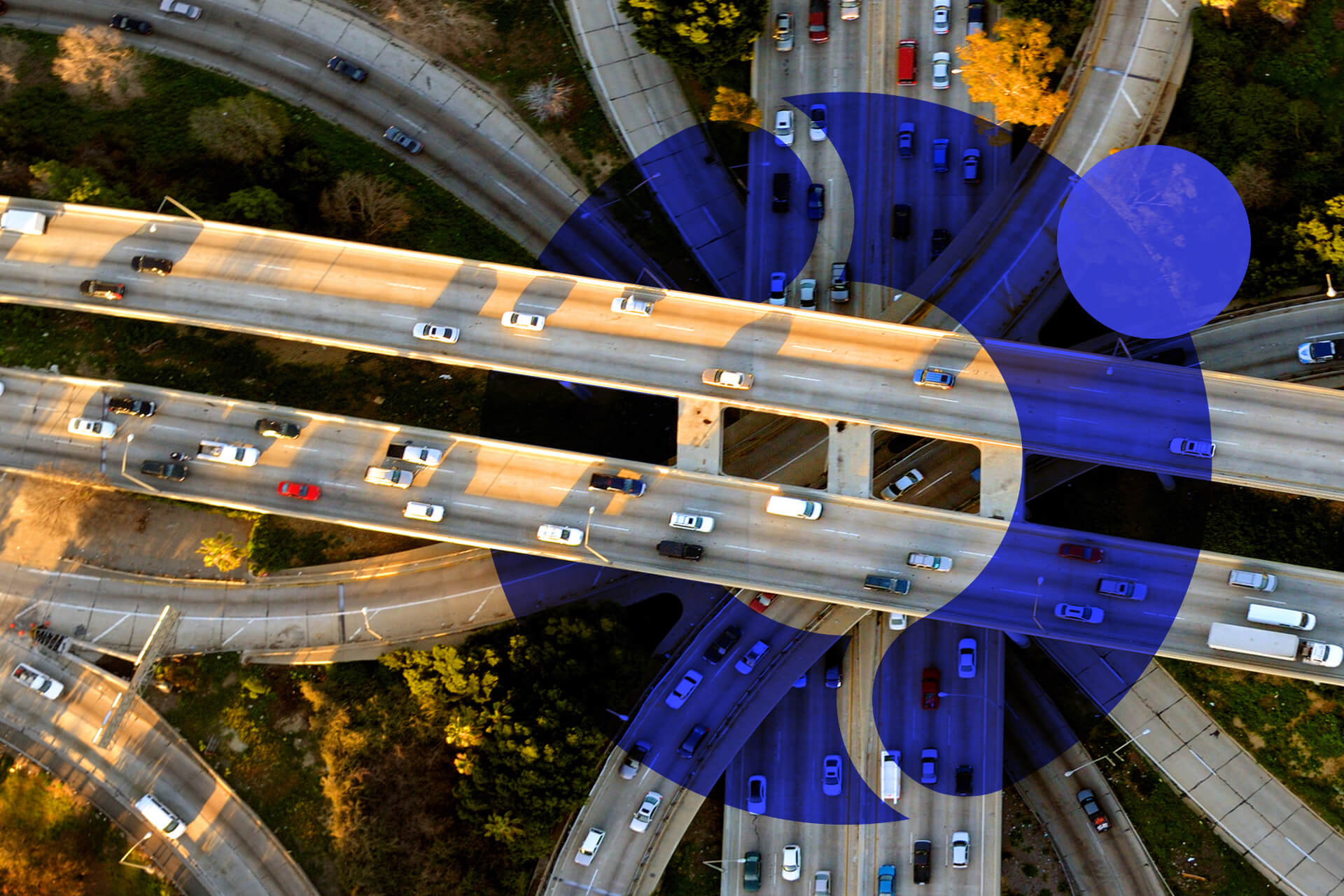
How Can Logistics Professionals Deal With Urban Congestion Issues?
March 15, 2022 - Emily Newton
Revolutionized is reader-supported. When you buy through links on our site, we may earn an affiliate commission. Learn more here.
Urban congestion can quickly become a headache for any driver, but it’s a significant concern for logistics professionals. One study found that the average American driver lost 36 hours due to congestion in 2021, costing them $564.
Researchers also recently confirmed the long-held belief that a higher percentage of urban land use makes cities more congested. Another takeaway was that cities with multiple urban centers have better traffic flow than those with a single core area.
Logistics professionals know urban congestion is getting worse, even if they don’t always understand the precise reasons why. Here are some of the specific ways they could tackle the problem.
Microdistribution Centers
One of the prevalent ideas associated with urban congestion management is that it’s best to move goods as close as possible to the customers who will receive them. Some large retailers with the resources available can fulfill people’s online orders from physical stores in the community. Animal care brand Petco indicated such arrangements account for 83% of orders placed online. However, utilizing microdistribution centers is another option.
This approach involves converting unused spaces into hubs for order processing and preparation. Finding the best spaces sometimes requires choosing once-busy buildings that have become significantly less popular. Shopping malls are good examples.
The fact that teenagers frequented them after school and older people often used them in the mornings as safe, climate-controlled places to walk shows the former multigenerational appeal.
However, changed habits and preferences throughout today’s society mean many malls have closed down or are largely abandoned. Bill Thayer is the co-founder and co-CEO of logistics-as-a-service provider Fillogic. He said during a recent interview that 5 million packages go undelivered per day due to the lack of capacity for them. He also said solving the problem by building more warehouses would mean creating 1.5 billion square feet of those facilities in the United States by 2025.
Thayer also pointed out that shopping mall designers strategically placed them in parts of communities closest to the most people. That means they’d make perfect microdistribution centers.
Research Confirms the Positive Impacts on Urban Congestion
A 2021 study showed that using microdistribution centers to fill 50% of e-commerce orders associated with the cities of Chicago, Sydney and London would cause significant declines in urban congestion and air pollution.
The research also indicated using such facilities to assist with last-mile deliveries could reduce supply chain emissions by 16-26% by 2025. London would see the biggest traffic change if people used microdistribution centers. Those would allow for 320 million fewer miles traveled, or a 13% reduction.
Cargo Bikes
Cargo bikes have also emerged as feasible solutions for urban congestion. Firstly, delivery personnel using them can travel in bike lanes, which are usually less busy than the parts of roads designated for motor vehicles. Plus, if a person has an electric or pedal-style bike, those options eliminate or significantly reduce emissions.
Cargo Bikes Offer Faster Delivery Options Than Vans
Researchers at the University of Westminster examined the urban congestion problem by comparing parcel-delivery routes used by cargo bikes versus vans. They found that the bicycle users could perform their duties 1.61 times faster than people using vans. They also discovered cargo bikes had higher average speeds. That meant users could deliver approximately seven parcels per hour versus only four for people in vans.
Hamburg Officials Eye Cargo Bikes to Cut Emissions
Urban congestion doesn’t just make it harder to arrange fast deliveries. It also contributes to air pollution. Fortunately, many of the last-mile delivery options under investigation now are low or no-emission options.
Hamburg, Germany, is one of the cities already using cargo bikes extensively. Officials there set a goal to reduce CO2 emissions from deliveries by 40% of 2017 levels by 2030. However, a study examining how to achieve that goal found the city still had a lot of work to do. It needs to add between 31,000-51,000 bikes to those already used. Plus, the plan must deploy 30% of the new ones by 2025. Only then would Hamburg have a decent chance of meeting that milestone.
Recruiting so many more people to use the bikes could prove challenging. However, itwould become less daunting if delivery companies had existing staff members transition from vans to bikes.
Drones
People often say “as the crow flies” to indicate that the skies offer the most direct route to a destination. That’s why it’s no surprise that some supply chain professionals have looked at using drones to solve problems caused by urban congestion. Even so, that approach doesn’t give instant results.
That’s because of the tight regulations stipulating when and where drones can fly. Some of the early adopters have already seen results that will likely make other companies follow suit. Yariv Bash is the founder and CEO of Flytrex, which uses drones to deliver small, lightweight items to people’s homes.
He said, “Online ordering has seen an amazing boom in the last year-and-a-half because of COVID-19. With that, you’re seeing interesting and better on-demand delivery services because the current options are just not good enough.” Each of the company’s drones can carry up to 6.6 pounds and make five-mile round trips. Bash explained, “Once it takes off, within three to four minutes, your dinner is going to be in your backyard.”
Another trial associated with a different company assisted the residents of a small Irish town when they needed grocery essentials quickly. Once someone’s order left the supermarket, they received it approximately 200 seconds later. Granted, in that case, the goal was not to cope with urban congestion. However, that speedy service was ideal for people who ran out of supplies they urgently needed.
Some people who benefited from the trial mentioned that they appreciated being able to use it when icy roads made car travel dangerous or when COVID-19 quarantining made them housebound. Statistics from the company that ran the trial said 50% of orders came from people who’d used the service at least four times. Then, 35% represented repeat customers overall.
Route-Planning Apps
It’s increasingly common for people in the delivery sector to use mobile apps during their work. A long-distance trucker might use one to document stops at weigh stations, or a cargo bike rider could refer to an app to verify the location of their next delivery. However, such apps can also help delivery personnel get where they need to go while encountering minimal traffic.
Some of these are most useful at the dispatch level. If a fleet manager sees details about construction work or a collision making traffic worse than usual in a city, they could be proactive and advise people on duty in the area to steer clear of that area and take a different route until the issue clears. Then, driver-facing apps might show people several different ways to reach a destination and the estimated arrival times for each one.
How Walmart Uses Route Planning to Succeed Despite Urban Congestion
Walmart made a route-planning app an integral part of its rollout of Express Delivery. That service allows customers to receive their goods within two hours of placing their orders. As of 2020, the Express Delivery option was available for about 160,000 items.
Once someone confirms their order, an artificial intelligence (AI) algorithm looks at numerous factors to determine the fastest way to get it to them. These include a person’s chosen time slot and the number of other customers also assigned to it, the number and type of vehicles available, the route distance between stores and delivery addresses and any weather conditions that could impact the situation. Those variables combine to calculate the estimated arrival time.
Then, a second AI component handles system capacity and slot management. It examines the number of orders against the available labor force. There’s yet another AI algorithm to assist with organizing the orders. It expedites the picking and packing of items within stores prior to deliveries.
Getting Creative to Cope With Urban Congestion
These are only some of the many ways supply chain professionals tackle urban congestion. Another recent arrangement involved bringing parcels into Manhattan, New York, by ferry.
Parcel lockers are also becoming more popular in some cities. When people use those, they can select points near where they have to travel anyway, such as lockers located on their route to work or their child’s school. Then, there’s no need to make a special trip to retrieve parcels, and door-to-door delivery vehicles are out of the equation altogether.
Solutions like these will almost certainly become more common for the foreseeable future. Although there’s no quick fix for urban congestion and its impacts on the supply chain, creative strategies can help logistics professionals make progress.
Revolutionized is reader-supported. When you buy through links on our site, we may earn an affiliate commission. Learn more here.
Author
Emily Newton
Emily Newton is a technology and industrial journalist and the Editor in Chief of Revolutionized. She manages the sites publishing schedule, SEO optimization and content strategy. Emily enjoys writing and researching articles about how technology is changing every industry. When she isn't working, Emily enjoys playing video games or curling up with a good book.






